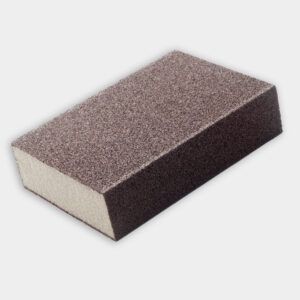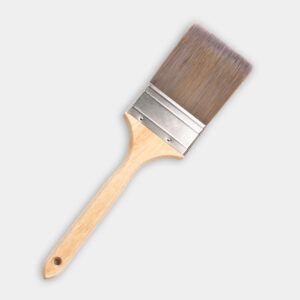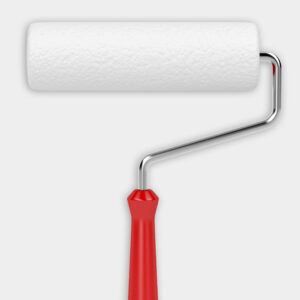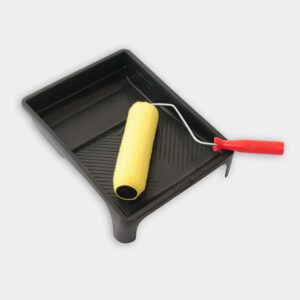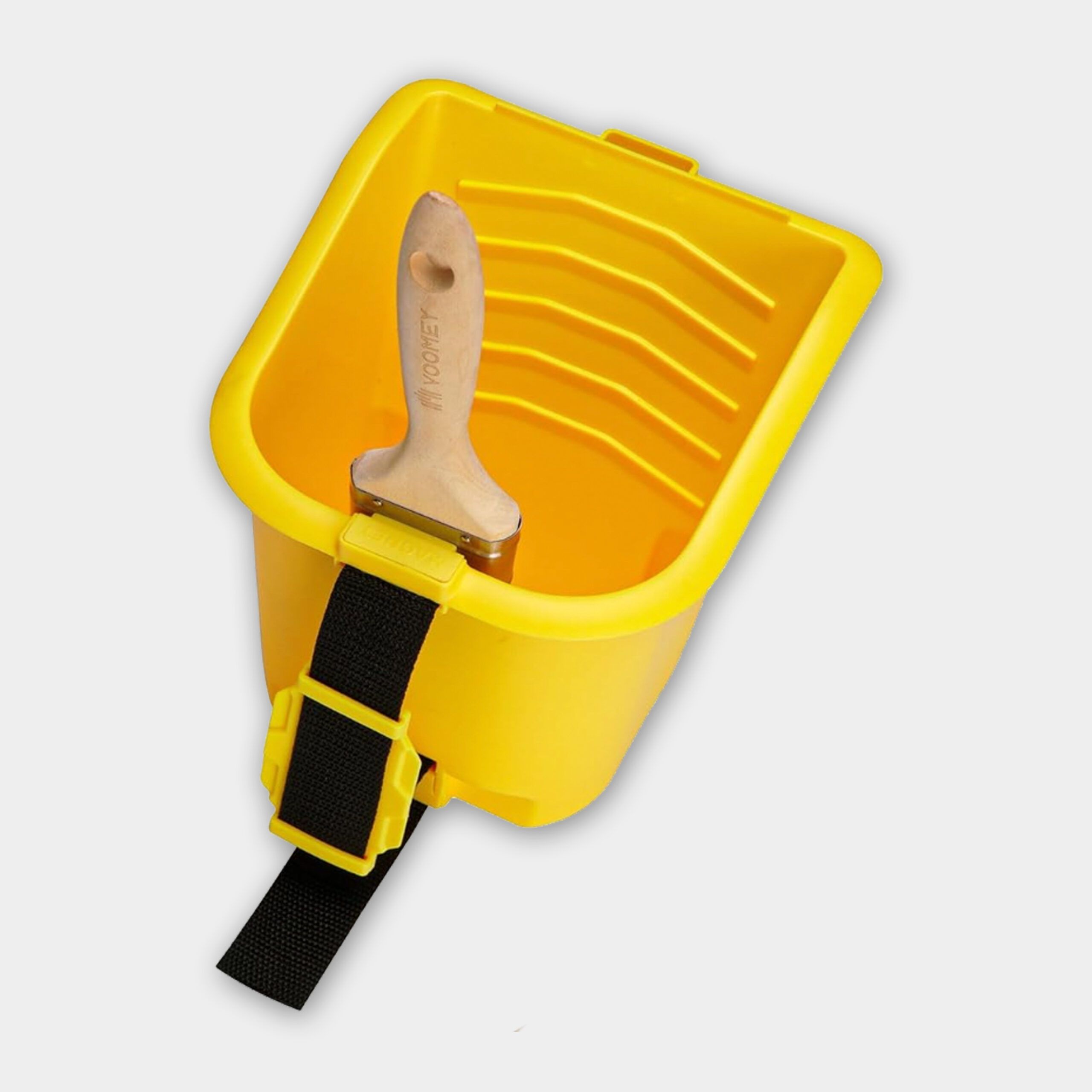Wood paneling can date a room, but painting it is an easy and affordable way to modernize your space. With the right techniques and materials, you can transform dark, outdated paneling into a fresh, bright surface that complements your home’s style. In the video above, This Old House expert painter Mauro Henrique teaches host Kevin O’Connor how to paint wood paneling, showing that it’s a project well within reach for many homeowners.
Types of Wood Paneling
You might have one of several types of wood paneling in your home. Each type requires slightly different preparation and painting techniques. Here are some of the most common types:
- Wainscoting: A decorative paneling style that typically covers the lower portion of walls. It features square panels with stiles (vertical flat sections), rails (horizontal flat sections), and inset sections. You’ll often see this type of paneling in dining rooms and other formal areas of the home.
- Beadboard: Narrow, vertical planks with a distinctive groove between each board. This style adds texture and visual interest to walls, and you’ll see it used in bathrooms, kitchens, and mudrooms. Beadboard is versatile and works in both traditional and contemporary designs.
- Solid wood paneling: Made from full wooden boards and can vary in width and style. The panels can run vertically or horizontally. You’ll usually see solid wood paneling in older homes. This type of paneling provides a rich, natural look and can be a stunning feature in living areas and bedrooms.
Tools and Materials
You’ll need the right tools before tackling this project. Here are the necessary tools and materials for painting wood paneling.
- Paint
- Primer
- Sanding block
- Paintbrush
- Paint roller with sleeve
- Paint tray
- Paint cut bucket
- Painter’s tape
- Mild detergent
- Wood filler
- Tack cloth
Ways To Apply Paint to Wood Paneling
Different tools are best suited for different jobs. Here’s our team’s expert advice:
- Paint sprayer: Henrique always recommends a paint sprayer because it’s the best way to DIY a professional paint job. That being said, if there was ever a perfect project for a paint sprayer, it’s the beadboard because those little curves and bends are hard to get to with a brush or roller.
- Paintbrush: A paintbrush is good for cutting around the edges of the wainscoting and for getting into the crevices of the beadboard.
- Paint roller: Use a paint roller for the wainscoting fields and for the most protruding surface of the beadboard. Henrique recommends getting a roller with a long nap to get deep into the crevices of the beadboard and then going back through each crack with the paintbrush to get rid of drips and bubbles.
Choosing the Right Paint and Primer for Wood Paneling
The quality of the paint and primer you use plays a big role in the outcome of your project. Primer ensures the paint sticks, while high-quality paint can make your project look more professional.
Pick a high-quality, stain-blocking primer to prevent any wood tannins from bleeding through the paint. This step is especially important for darker wood or older paneling. Consider tinting the primer if you’re using a dark paint color for better coverage. A tinted primer can help bring about a more even and vibrant final color.
You’ll also need to select a paint finish based on the room’s use and the look you want to achieve. For example, satin or semi-gloss finishes are ideal for high-traffic areas because they’re durable and easy to clean. These finishes offer a subtle shine and are resistant to scuffs and stains. Flat or eggshell finishes can help hide imperfections in the paneling but may be less durable. These finishes give a soft, matte appearance but are more susceptible to wear and tear.
Preparing Wood Paneling for Painting
Taking the time to prep your paneling helps the paint look better and last longer. Follow these steps to get your surface ready for painting:
- Clean the paneling to remove any dirt, dust, or grease. Use a mild detergent and a soft cloth to avoid damaging the wood.
- Sand the surface lightly with 220-grit sandpaper to create a slightly rough texture. This helps for better paint adhesion. Focus on smoothing out any rough or uneven spots.
- Fill any nail holes or imperfections with wood filler and sand smooth once dry. Wait for the filler to dry completely before sanding and painting.
- Wipe down the paneling with a tack cloth to remove any sanding dust. A tack cloth helps get rid of fine particles that could affect the paint finish.
- Apply painter’s tape to protect any adjacent surfaces you don’t want to paint. Press the tape down firmly to prevent paint from seeping through.
How To Paint Wood Paneling
With the sanding finished, Henrique shows O’Connor how to apply paint and primer to the paneling. Follow these steps for the best results:
- Apply a coat of primer using a brush for the grooves and edges and a roller for larger, flat areas. Focus on covering all surfaces evenly.
- Allow the primer to dry completely. This typically takes about an hour. Good ventilation can help speed up drying time.
- Lightly sand the primed surface with fine-grit sandpaper to achieve a smooth finish. This step helps reduce brush strokes or imperfections.
- Wipe away any dust with a tack cloth to give a clean surface for the paint to adhere to.
- Apply the first coat of paint using the same technique as with the primer. Use careful, even strokes to avoid drips and brush marks.
- Let the first coat dry for about two hours, or as recommended by the paint manufacturer. Check the paint can for specific drying times.
- Apply a second coat of paint for complete coverage and a uniform finish.
Tips for Painting Different Types of Paneling
Each type of paneling has its own quirks. Here are some helpful tips:
Painting Wainscoting
Use an angled brush to paint the detailed areas and grooves carefully. Angled brushes can reach into small spaces without leaving brush marks. For even coverage, we recommend working in small sections to maintain control and precision. Consider using a small foam roller for the flat panel areas for a smooth finish. Foam rollers give a professional-looking finish with fewer roller marks.
Painting Beadboard
Use a paint sprayer for quick and even coverage, especially for the grooves. Paint sprayers can quickly cover large areas and intricate details. You can still use a brush and roller if you prefer. Start with the brush to get into the grooves, and follow with the roller for the raised areas. Check for and smooth out any drips that may build up in the grooves.
Painting Solid Wood Paneling
Paint in the same direction as the wood grain for a natural look. This helps maintain the wood’s natural appearance. Use long, smooth strokes with your brush or roller to reduce visible brush marks. Consistent, even strokes will give you the best finish with the least effort.
Common Challenges and Solutions for Painting Wood Paneling
Sometimes, things don’t go as planned. Here’s how to fix common issues:
- Knots showing through: Knots can bleed through paint, so they require a specialized primer. Apply a shellac-based primer specifically over knots before the general priming step.
- Paint not adhering: Thorough cleaning and sanding before priming and painting are necessary for paint adhesion and a flawless finish.
- Uneven texture: Consider using a high-build primer to help smooth out the surface before painting. High-build primers fill in minor imperfections and create a more uniform surface.
By following these steps, you can give your old wood paneling a fresh, new look that brightens up your home.
